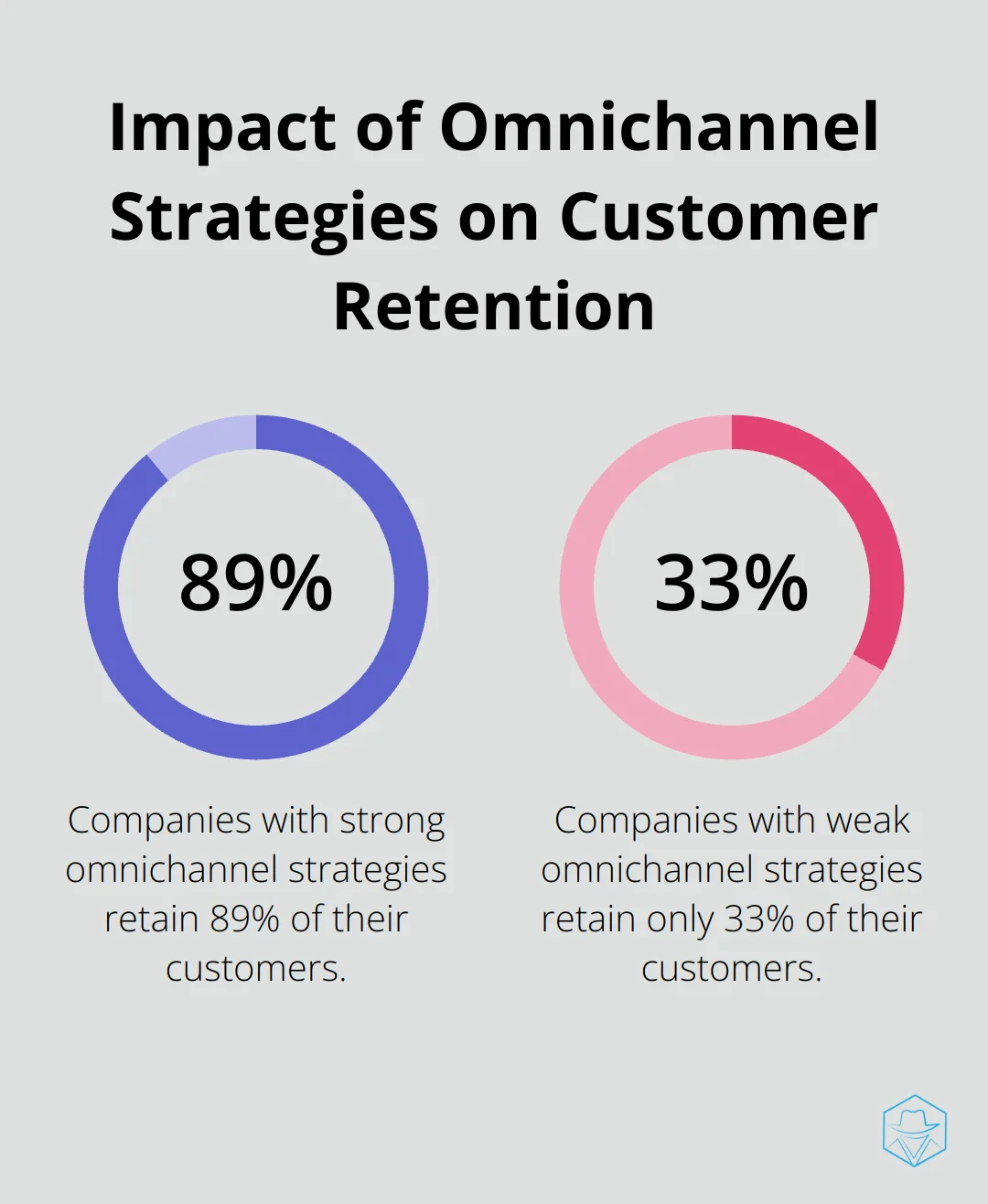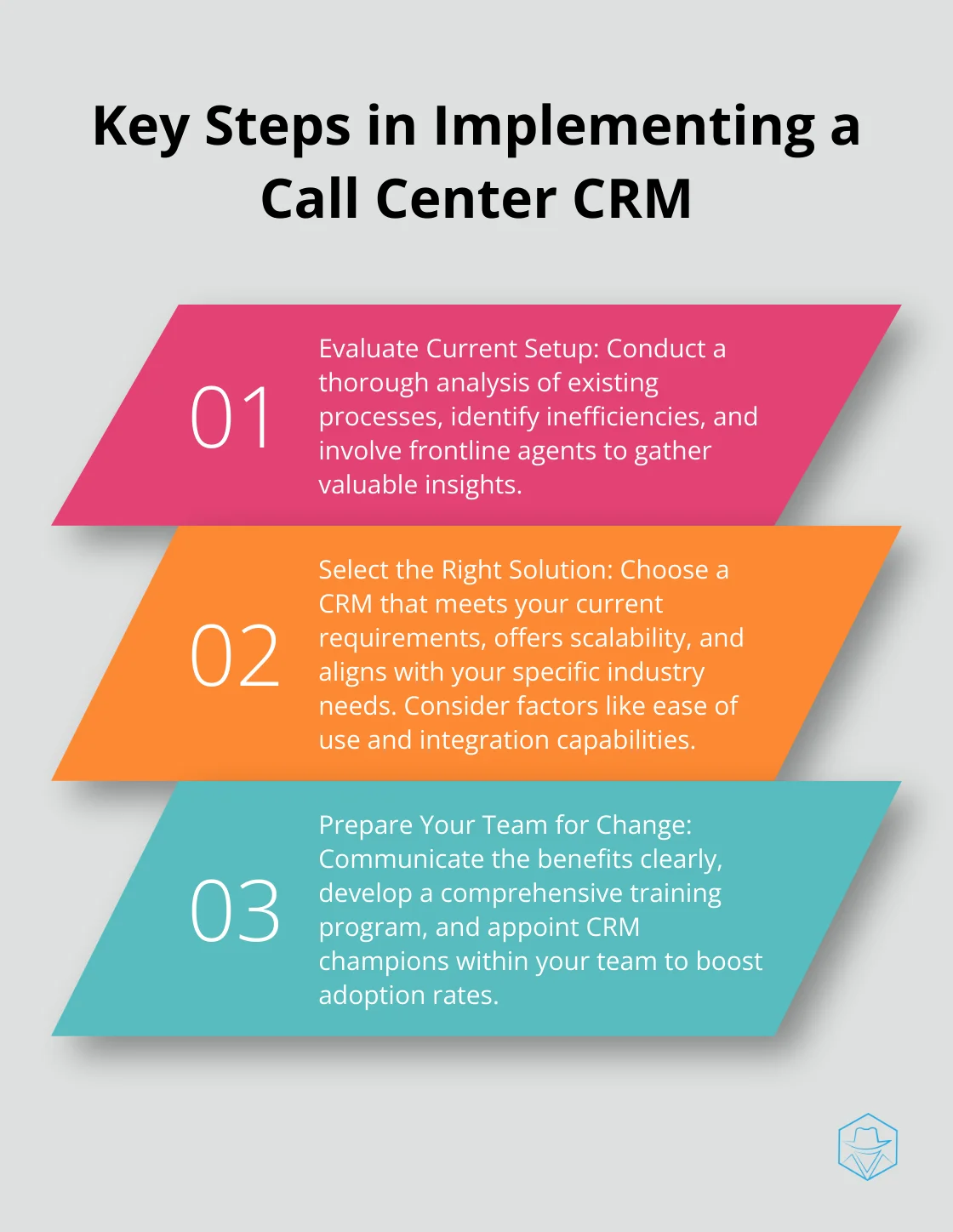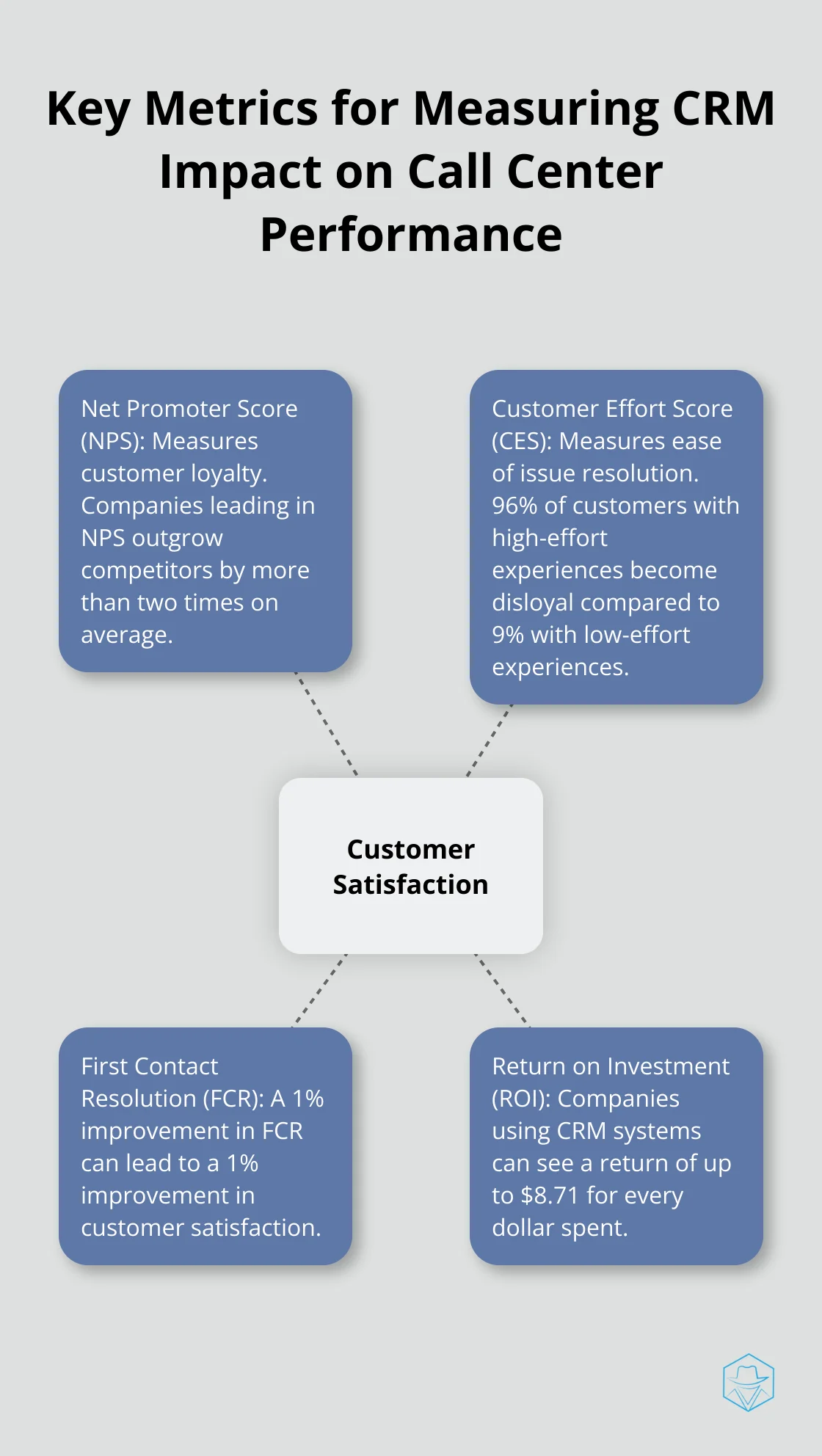How to Optimize Call Centers with the Right CRM

At Drop Cowboy, we know that a powerful CRM for call centers can transform customer interactions and boost operational efficiency.
Call centers are the frontline of customer service, and the right CRM system can make all the difference in managing these critical touchpoints.
In this post, we’ll explore how to optimize your call center with the perfect CRM solution, from key features to implementation strategies and measuring success.
What Makes a CRM Effective for Call Centers?
Centralized Customer Data Management
An effective CRM consolidates all customer information in one place. This allows agents to access a customer’s complete history, preferences, and previous interactions instantly. A study by Aberdeen Group highlights the importance of this feature: companies with strong omnichannel customer engagement strategies retain an average of 89% of their customers, compared to 33% for companies with weak omnichannel strategies. This statistic underscores the value of a 360-degree view of the customer.

Intelligent Call Routing
Smart call routing transforms call center operations. A good CRM uses customer data to route calls to the most appropriate agent based on skills, language, or previous interactions. This approach reduces wait times and improves first-call resolution rates. Five9 (a leading contact center software provider) reports that intelligent call routing can improve first-call resolution by up to 20%.
Seamless Omnichannel Integration
Modern customers expect to communicate through their preferred channels (phone, email, chat, or social media). An effective CRM integrates all these channels, providing a unified view of customer interactions. This integration is essential, as research from Salesforce shows that 75% of consumers expect consistent experiences across multiple channels.
Real-time Analytics and Reporting
Data-driven decision making drives success in call centers. A powerful CRM provides real-time analytics on key metrics like average handling time, customer satisfaction scores, and agent performance. These insights enable managers to make informed decisions quickly. Zendesk’s Customer Experience Trends Report 2024 reveals that 65% of CX leaders view AI-powered analytics as a strategic necessity for enhancing call center efficiency.
The implementation of these features in your call center CRM can significantly improve operations. While many CRM options exist, it’s important to choose one that aligns with your specific needs. For a solution that combines advanced communication features with CRM capabilities, Drop Cowboy offers a unique blend of ringless voicemail, SMS integration, and AI-powered voice cloning (all designed to enhance customer engagement and streamline operations).
Now that we’ve explored the key features of an effective call center CRM, let’s move on to the practical aspects of implementing such a system in your organization.
Implementing Your Call Center CRM
Evaluate Your Current Setup
Before you select a CRM, conduct a thorough analysis of your existing processes. Identify inefficiencies, pain points, and areas where customer experience falls short. Involve your frontline agents in this process – they often possess invaluable insights into day-to-day challenges. A study by McKinsey reveals that companies which involve employees in transformation efforts are 3.5 times more likely to succeed.
Create a comprehensive list of must-have features based on your findings. This might include advanced call routing, integration with your existing phone system, or specific reporting capabilities. Prioritize these features to guide your CRM selection process.
Select the Right Solution
With your needs clearly defined, evaluate CRM options. Look for solutions that meet your current requirements and offer scalability for future growth. Consider factors like ease of use, integration capabilities, and vendor support.
Find a CRM that aligns with your specific industry needs. Request demos and (if possible) trial periods to test the CRM in your actual work environment. Involve a cross-section of your team in this evaluation process to ensure the chosen solution meets diverse needs across your organization.
Prepare Your Team for Change
The success of your CRM implementation depends on user adoption. Start by clearly communicating the benefits of the new system to your team. Address concerns proactively and emphasize how the CRM will make their jobs easier and more efficient.
Develop a comprehensive training program that caters to different learning styles. This might include hands-on workshops, video tutorials, and written guides. A report by Prosci indicates that projects with excellent change management are six times more likely to meet objectives than those with poor change management.
Consider appointing CRM champions within your team – these are enthusiastic early adopters who can provide peer support and encouragement. Their positive influence can significantly boost overall adoption rates.

Monitor and Optimize Continuously
Your CRM journey doesn’t end with implementation. Set up a system for continuous monitoring and improvement. Regularly collect feedback from users and analyze key performance metrics to identify areas for optimization.
Many modern CRMs offer AI-powered insights that can help you uncover trends and opportunities. Stay informed about new features and updates from your CRM provider. Often, these updates can introduce powerful new capabilities that can further enhance your call center operations.
Implementing a CRM is an ongoing process of refinement and optimization. The next chapter will explore how to measure the impact of your new CRM on call center performance, providing you with the tools to quantify your success and identify areas for further improvement.
How to Measure CRM Impact on Call Center Performance
Customer-Centric Metrics
Net Promoter Score (NPS) serves as a powerful indicator of customer loyalty. Companies that lead in NPS outgrow competitors by more than two times on average (according to Bain & Company). Track your NPS before and after CRM implementation to measure impact.
Customer Effort Score (CES) measures how easy it is for customers to resolve their issues. A study by Gartner found that 96% of customers with a high-effort service interaction become more disloyal compared to just 9% who have a low-effort experience. Your CRM should help reduce customer effort, so monitor this metric closely.
First Contact Resolution (FCR) rate is equally important. The SQM Group reports that a 1% improvement in FCR can lead to a 1% improvement in customer satisfaction. Use your CRM’s reporting features to track FCR and identify areas for improvement.
Agent Performance Metrics
Average Handle Time (AHT) is a key metric for agent productivity. While you want to reduce AHT, don’t sacrifice quality. The right CRM helps agents access information quickly, potentially reducing AHT without compromising service quality.
Agent utilization rate measures the percentage of time agents spend on customer-related activities. A study by McKinsey found that top-performing call centers have utilization rates between 60% and 80%. Your CRM should help increase this rate by streamlining processes and reducing administrative tasks.

ROI Calculation
Calculate Return on Investment (ROI) for your CRM implementation to justify the investment and identify areas for further optimization. Start by tracking cost savings (these might include reduced call handling times, decreased training costs due to easier onboarding, or lower customer churn rates).
Next, measure revenue increases. Has your CRM led to more upsells or cross-sells? Are you retaining more customers? Quantify these improvements.
The Contact Center Pipeline reports that companies using CRM systems can see a return of up to $8.71 for every dollar spent. While your results may vary, tracking ROI helps prove the value of your CRM investment.
Continuous Improvement
Measure CRM impact as an ongoing process. Review these metrics regularly, gather feedback from agents and customers, and use the insights to refine your call center operations. With the right approach, your CRM can become a powerful tool for driving call center success.
If you’re considering a CRM that combines advanced communication features with robust analytics, Drop Cowboy offers a unique blend of ringless voicemail, SMS integration, and AI-powered voice cloning (all designed to enhance customer engagement and streamline operations).
Final Thoughts
A CRM for call centers has become essential in today’s fast-paced business world. It transforms operations, enhances customer experiences, and boosts efficiency through centralized data management, intelligent call routing, and real-time analytics. As technology advances, we expect AI and machine learning to play a larger role in call center CRM, offering predictive analytics and more personalized interactions.
At Drop Cowboy, we strive to stay ahead of these technological advancements. Our platform combines cutting-edge communication features with robust CRM capabilities, offering a unique solution for businesses aiming to optimize their call center operations. We provide innovative tools designed to enhance customer engagement and streamline operations, including ringless voicemail, SMS integration, and AI-powered voice cloning.
Implementing a CRM requires ongoing refinement and optimization. Companies should monitor performance metrics, gather feedback, and stay informed about new technologies. This approach ensures that a call center CRM continues to deliver value and drives customer satisfaction and business growth long into the future.
blog-dropcowboy-com
Related posts

July 20, 2025
MessageBird vs Twilio: Which SMS API Is Better?
Compare MessageBird vs Twilio SMS APIs. Discover strengths, pricing, and performance to make an informed choice for your communication needs.

August 22, 2025
Streamline Your Outreach with Intelligent Campaign Automation
Boost outreach with campaign automation. Discover efficient strategies that save time, increase engagement, and enhance communication efforts.

April 14, 2025
Crafting the Perfect Shopify Abandoned Cart Email
Boost sales by crafting the perfect Shopify abandoned cart email. Learn effective strategies to recover lost revenue today.

May 6, 2025
Marketing Automation Funnel: Optimize Your Conversions
Optimize your marketing automation funnel to boost conversions. Discover practical tips and proven techniques to streamline your customer journey.

June 6, 2025
Automobile CRM: Drive Sales in the Automotive Industry
Boost automotive sales with effective Automobile CRM tools. Discover strategies, insights, and trends to enhance your dealership’s customer management.

June 5, 2025
How to Use an Outbound Dialer for Better Sales Results
Boost sales with an outbound dialer. Streamline calls, enhance efficiency, and improve customer engagement for top sales performance.